Ice skating enthusiasts understand the importance of well-sharpened skates for an optimal on-ice experience.
Whether you’re a seasoned skater or a beginner, learning how to sharpen ice skates at home can be a rewarding skill.
In this comprehensive guide, we’ll delve into the step-by-step process of how to sharpen ice skates at home using common tools, offering pro tips for precision and safety.
From understanding the ideal radius of hollow to mastering the use of a skate sharpening machine, this guide aims to empower skaters to take control of their equipment maintenance. So, stay sharp.
When You Should Sharpen Ice Skates?
Regularly sharpening ice skates is essential for maintaining optimal performance on the ice. Blades naturally dull over time due to friction and contact with the ice.
Skaters should sharpen their blades when they notice reduced glide, difficulty turning, or a loss of control.
Beginners may not notice these signs as quickly, but as skaters advance, they become more attuned to the nuances of blade sharpness.
Additionally, factors like the skater’s weight, skill level, and frequency of use influence how often sharpening is necessary. Competitive skaters often sharpen their blades more frequently to ensure precision and responsiveness.
In general, a rule of thumb is to sharpen ice skates after every 15-20 hours of use, but skaters should pay attention to their individual experience on the ice and adjust the frequency accordingly to maintain a sharp edge for optimal performance and safety.
Tools and Equipment for Sharpening Ice Skates
Sharpening ice skates at home can be a cost-effective and convenient way to maintain their performance.
Skate Sharpening Machine
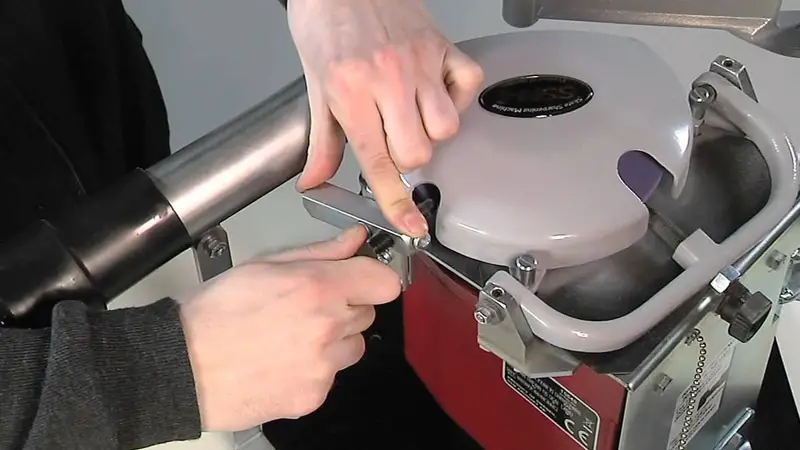
A key tool for sharpening ice skates is a skate sharpening machine. These machines are designed specifically for the task, featuring grinding wheels that reshape and hone the skate blades to the desired sharpness.
They provide consistency and precision in the sharpening process, ensuring uniform edges on both skates.
Honing Stone or Diamond Stone
After using the skate sharpening machine, a honing stone or diamond stone is employed to fine-tune the edges of the blades.
This helps eliminate any burrs or imperfections, resulting in a smoother and more polished finish.
Honing stones come in various grits, allowing skaters to achieve the desired level of sharpness.
Edge Checker
An edge checker is a tool used to verify the evenness and symmetry of the edges on the skate blades.
Skaters or technicians can glide the edge checker along the length of the blade to ensure that both edges are consistent. This tool is crucial for maintaining balance and stability on the ice.
Radius Gauge
Skaters often have a preference for a specific radius of hollow (ROH) on their skate blades. A radius gauge helps measure and maintain this desired curvature.
By adjusting the ROH, skaters can customize their skates to match their skating style, weight, and skill level, influencing factors such as agility and stability on the ice.
Skate Level
To ensure accurate and precise sharpening, a skate level is used to confirm that the skates are positioned evenly on the sharpening machine.
It helps maintain a consistent angle during the sharpening process, preventing uneven edges.
A level skate is essential for achieving optimal performance and reducing the risk of injury on the ice.
How to Sharpen Ice Skates at Home: Step-by-Step Instruction
While professional skate sharpening services are available, learning to do it yourself provides flexibility and ensures your skates are always ready for the ice.
Here’s a step-by-step guide to help you sharpen ice skates at home:
Gather the Necessary Tools
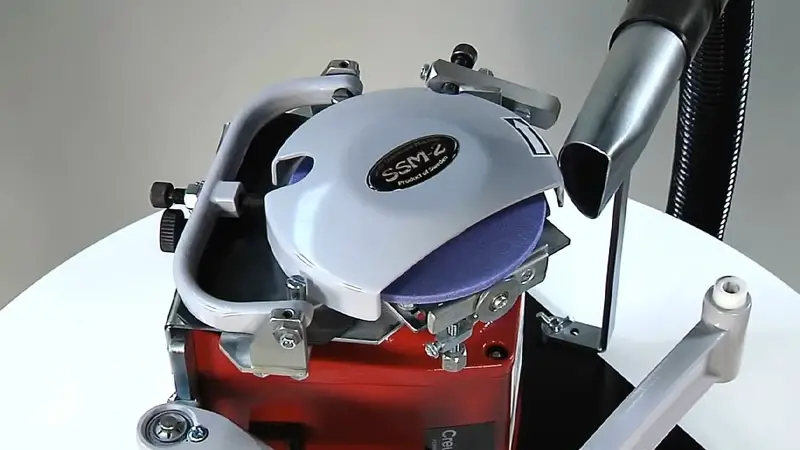
Before you begin, ensure you have the right tools: a skate sharpening machine, honing stone or diamond stone, edge checker, radius gauge, and skate level.
Having all the necessary equipment on hand will make the process smoother.
Secure the Skates
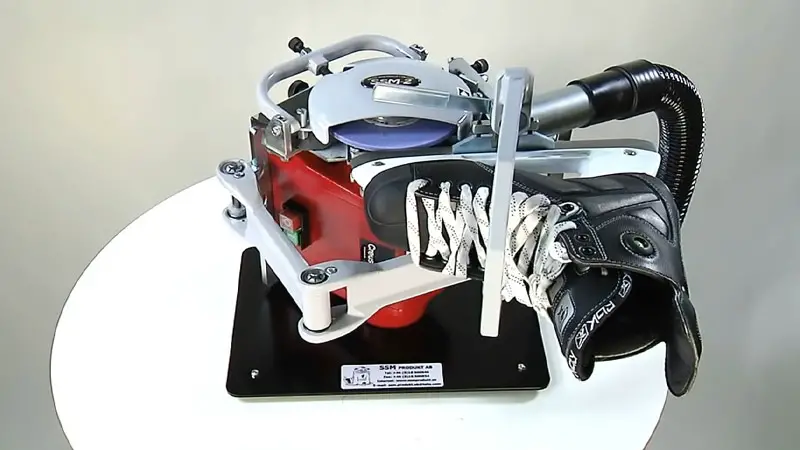
Place the skates securely in the skate sharpening machine, ensuring they are level and well-positioned.
Use the skate level to confirm that the blades are flat and parallel to the machine. This step is crucial for achieving an even and consistent sharpening.
Use the Skate Sharpening Machine
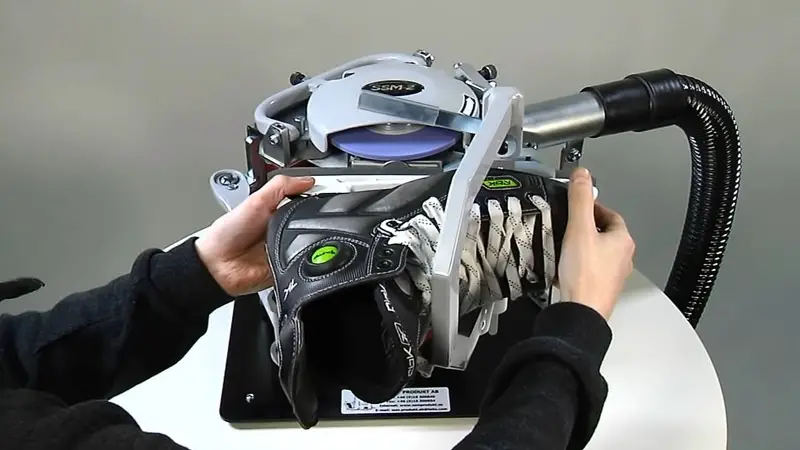
Turn on the skate sharpening machine and carefully run each skate blade along the grinding wheel. Follow the manufacturer’s guidelines for the specific machine you are using.
Take your time and apply even pressure to ensure uniform sharpening. Once done, switch to the honing stone or diamond stone to refine the edges.
Check and Measure
Use the edge checker to verify the evenness of the edges on both skates. Glide the edge checker along the length of each blade, making adjustments as needed.
Additionally, use the radius gauge to measure and confirm the desired radius of the hollow (ROH). These checks ensure the skates are properly sharpened and ready for use.
Test on the Ice
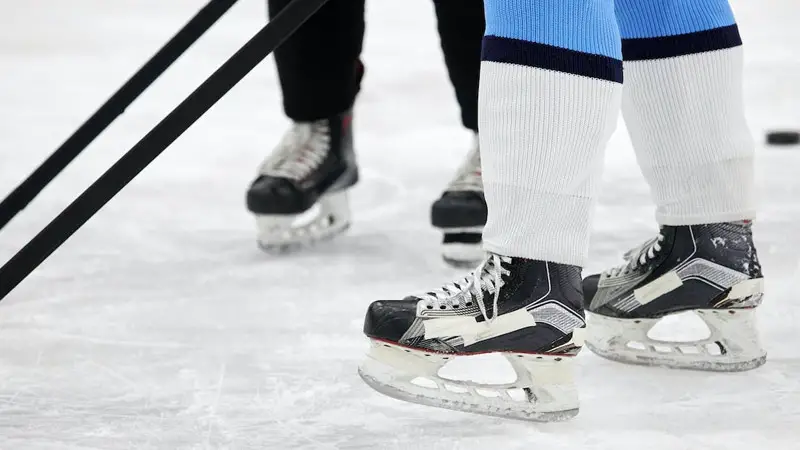
After sharpening, take your skates for a test on the ice. Pay attention to the feel of the skates, checking for improved glide, stability, and control. If necessary, make further adjustments based on your skating experience.
Regularly testing your skates will help you fine-tune the sharpening process to match your preferences and skating style.
Pro Tips for Sharpening Ice Skates
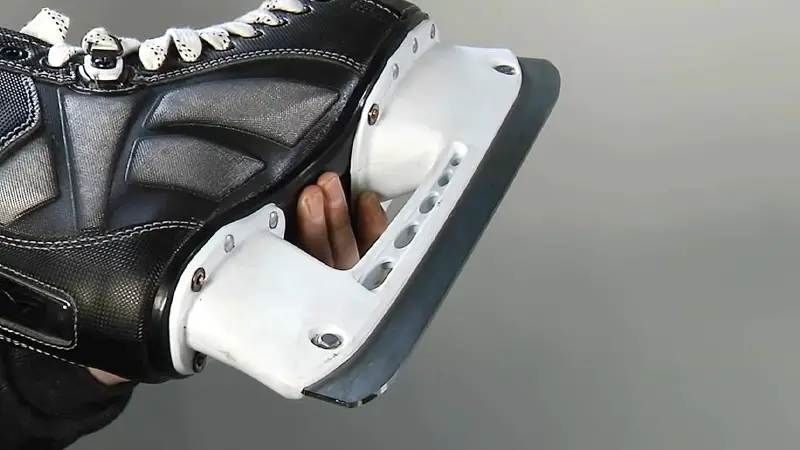
Achieving the perfect edge when sharpening ice skates requires attention to detail and some expert tips.
Whether you’re a seasoned skater or new to the process, consider these pro tips for more effective and precise sharpening:
Consistency is Key
Maintain consistent pressure and speed when using the skate sharpening machine. This helps ensure an even grind across the entire length of the blade.
Inconsistencies in pressure or speed can lead to uneven edges, affecting the skater’s balance and performance on the ice.
Understand Your Skating Style
Consider your skating style and preferences when choosing the radius of hollow (ROH). A deeper ROH (smaller number) provides more bite and stability, suitable for aggressive skaters or those performing quick turns.
A shallower ROH (larger number) offers smoother glide, ideal for speed skaters. Understanding your style helps customize the sharpening to enhance your on-ice experience.
Regular Maintenance Matters
Don’t wait until your skates feel noticeably dull to sharpen them. Regular maintenance, such as honing the edges with a stone, can help extend the time between full sharpening sessions.
This keeps your skates in better condition and ensures consistent performance.
Master the Art of Honing
Using a honing stone or diamond stone is a crucial step in achieving a polished and smooth finish. Focus on eliminating any burrs or imperfections left by the grinding wheel.
Honing not only refines the edges but also enhances the overall sharpness, contributing to a more enjoyable skating experience.
Test and Adjust
After sharpening, take the time to test your skates on the ice. Pay attention to how they respond to your movements and make adjustments accordingly.
Testing allows you to fine-tune the sharpening process based on your personal feel and ensures that your skates are optimized for your specific needs and preferences.
Importance of Sharpening Ice Skates
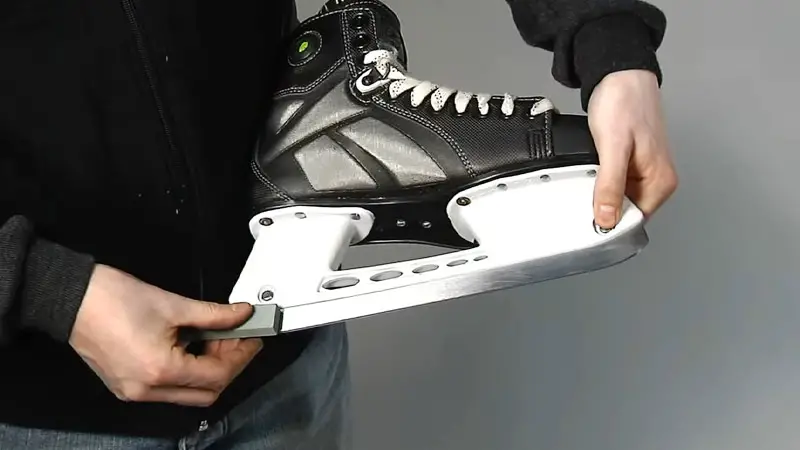
Sharpening ice skates is a crucial aspect of maintaining peak performance and ensuring a safe and enjoyable skating experience. Here’s why regular sharpening is of utmost importance:
Enhanced Performance
Sharpened skates provide better grip on the ice, translating to improved maneuverability and control.
A sharp edge allows skaters to execute turns, jumps, and spins with precision, enhancing overall performance and enjoyment on the ice.
Safety on the Ice
Dull skates can lead to instability and reduced control, increasing the risk of slips and falls.
Regular sharpening ensures that the edges are sharp enough to bite into the ice, providing the necessary traction for skaters to navigate confidently and safely.
Effortless Glide
Well-sharpened skates reduce friction with the ice, allowing for a smoother glide.
This not only conserves energy but also contributes to a more enjoyable and effortless skating experience. Skaters can cover more distance with each stride, making their time on the ice more efficient.
Consistent Skill Development
Skaters, especially those in training or competitive settings, rely on consistent and reliable performance.
Regular sharpening helps maintain the integrity of the skate blades, ensuring that skaters can consistently execute their routines and develop their skills without the interference of dulled blades.
Longer Lifespan of Skates
Proper maintenance, including regular sharpening, extends the overall lifespan of ice skates. Dull blades can wear down more quickly and may require more frequent replacement.
By keeping the edges sharp and addressing any imperfections promptly, skaters can prolong the usability of their skates and maximize their investment in quality equipment.
FAQs
How often should I sharpen my ice skates at home?
It’s recommended to sharpen your ice skates every 15-20 hours of use. However, pay attention to how they feel on the ice.
If you notice reduced performance, difficulty turning, or less control, it’s time to sharpen them.
Can I sharpen ice skates without a machine?
While it’s possible to use manual tools like a honing stone, a skate sharpening machine provides more precision.
Professional-grade sharpening is challenging without the machine’s consistent grinding, making it less ideal for achieving optimal results at home.
What is the ideal radius of hollow (ROH) for my skates?
The ideal ROH depends on your skating style. A deeper ROH (smaller number) offers more bite and stability for aggressive skaters, while a shallower ROH (larger number) provides a smoother glide for speed skaters.
Consider your preferences and adjust accordingly.
Can I over-sharpen my skates at home?
Yes, it’s possible to over-sharpen skates, leading to excessive blade removal. Follow the manufacturer’s guidelines for your skate sharpening machine and avoid excessive grinding.
Regular checks with an edge checker can help prevent over-sharpening and maintain the proper blade geometry.
How do I know if my skates are sharpened correctly at home?
After sharpening, conduct on-ice tests. Pay attention to improved glide, stability, and control. If your skates feel balanced and responsive, you’ve likely sharpened them correctly.
Use tools like an edge checker and radius gauge to ensure even edges and the desired radius of hollow.
Wrapping Up
Sharpening your ice skates at home is not just a maintenance task; it’s a skill that enhances your performance and safety on the ice.
By following the steps outlined in this guide and incorporating pro tips, you can confidently master the art of home skate sharpening.
Regular maintenance not only prolongs the lifespan of your skates but also contributes to a consistently enjoyable skating experience.
Empower yourself with the knowledge and skills needed to keep your blades sharp, ensuring every glide on the ice is a moment of precision and joy. Lace-up, sharpen up, and skate with confidence!

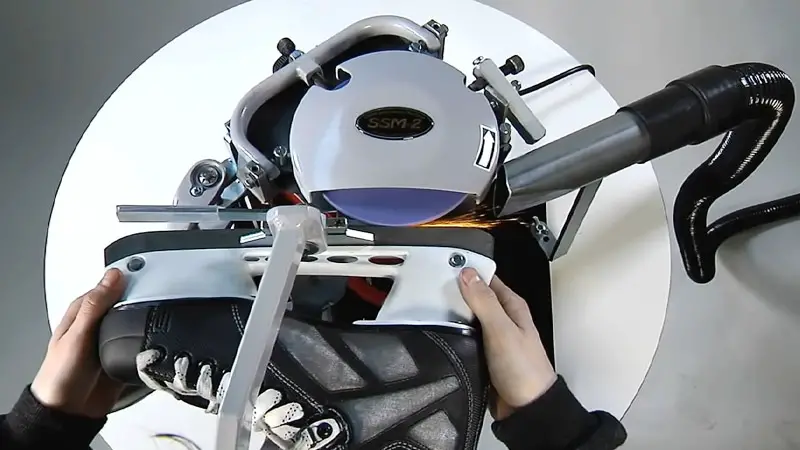






James Felix